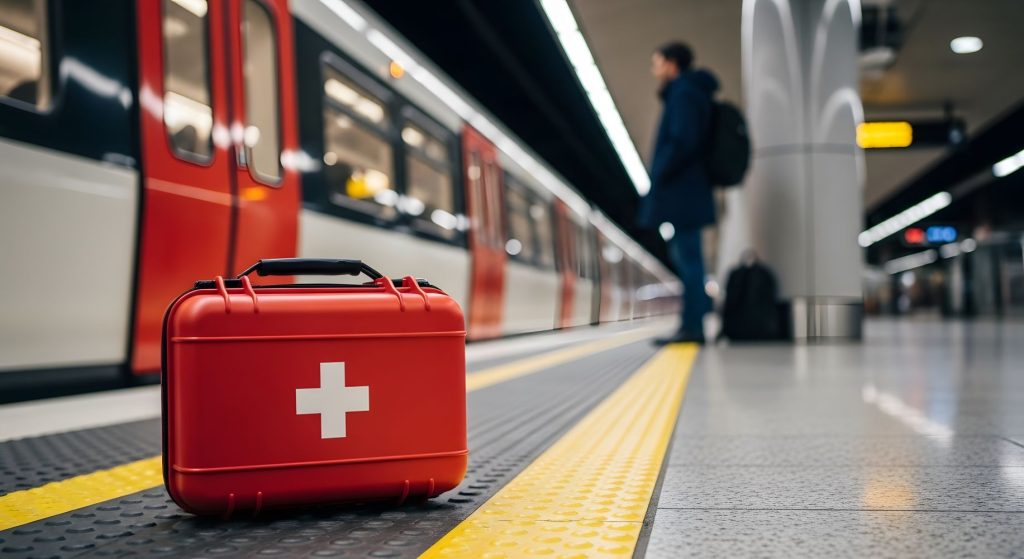Subway accidents can result in serious injuries, leaving victims with medical expenses, lost wages, and emotional distress. Determining liability in such cases is typically complex, involving multiple parties such as transit authorities, private contractors, or other passengers. Understanding who may be held responsible is crucial for pursuing fair compensation.
Below are key factors to consider when determining liability in a subway accident:
1. Negligence by Transit Authorities
Public transportation systems, including subways, are typically managed by government agencies, which are legally obligated to ensure passenger safety. Failure to address hazards like wet and slippery floors, broken handrails, or malfunctioning train doors can constitute negligence. If an accident occurs due to these unsafe conditions, the agency may be held liable for resulting injuries. Proper maintenance, timely repairs, and adequate security measures are essential to prevent accidents and protect passengers.
Furthermore, when navigating a subway accident claim, consulting a legal professional like a slip and fall lawyer can help assess whether negligence played a role.
2. Faulty Equipment or Poor Maintenance
Subway accidents frequently result from defective infrastructure, including malfunctioning escalators, worn-out brakes, or cracked tracks. Transit authorities have a legal duty to repair such hazards promptly. If records show they ignored repeated warnings or skipped inspections, this can demonstrate negligence, which strengthens an injury claim. Maintenance reports and repair requests can also become key evidence in proving liability, helping victims secure compensation for medical bills, lost wages, and pain and suffering.
Moreover, working with a subway accident attorney can be an excellent idea as they can help determine if a government agency or another entity bears responsibility.
3. Third-Party Contractors
The involvement of third-party contractors in subway operations creates a complex web of potential liability. While these private firms assume direct responsibility for job site safety during maintenance or construction, the hiring transit authority also retains a non-delegable duty to ensure passenger safety. For instance, if a contractor negligently leaves tools on tracks or fails to secure a work zone, leading to a derailment or passenger injury, both entities may be held accountable.
Courts will scrutinize the contract terms, the agency’s oversight measures, and which party controlled the hazard. Evidence such as safety violation reports, communication logs, and contractually mandated protocols becomes paramount. This shared liability framework allows injured victims to pursue compensation from multiple sources, though it necessitates a thorough investigation to untangle each party’s precise degree of fault.
4. Passenger Negligence
While rowdy or intoxicated passengers can directly cause subway accidents through shoving, altercations, or property damage, the transit authority may share liability if security failures enabled the incident. Courts examine whether reasonable precautions, like sufficient patrols or emergency call boxes, could have prevented the harm. Even when holding reckless individuals accountable, victims can pursue claims against transit agencies for negligent security, allowing dangerous conditions to persist.
5. Inadequate Security Measures
Transit agencies have a legal duty to implement adequate security measures in subway stations based on known risks. Failure to install proper lighting, maintain functioning surveillance cameras, or deploy sufficient transit police in high-crime areas may constitute negligence if an assault or theft occurs. Courts consider crime statistics and prior incidents when determining if security measures were reasonable. Victims of preventable crimes may have claims against the transit authority for failing to provide a safe environment.
6. Train Operator Error
Subway operators must follow strict safety protocols, and violations like excessive speeding, distracted operation, or disregarding signals can have catastrophic consequences. When investigations uncover operator error through black box data or witness testimony, both the employee and transit agency may face liability for resulting crashes.
Additionally, the employer bears responsibility for proper training and supervision, making them accountable for preventable accidents caused by their operators’ negligent actions behind the controls.
7. Government Immunity Challenges
While government entities like transit authorities often enjoy sovereign immunity protections, these shields can be pierced when plaintiffs demonstrate egregious negligence or intentional wrongdoing. A skilled lawyer knows how to file proper notices of claim, exploit statutory exceptions, and build evidence showing reckless disregard for safety, such as ignoring repeated warnings about hazardous conditions. These strategies can help victims overcome governmental immunity defenses in subway injury cases.
8. Statute of Limitations
Navigating the legal landscape for claims against municipal entities, such as a city’s transit authority, is uniquely challenging due to stringent state-mandated deadlines. Most notably, victims have a dramatically shortened window, often as brief as 90 days from the incident, to file a formal “Notice of Claim.” This document is not a lawsuit itself but an essential administrative prerequisite, detailing the accident, injuries, and intended compensation.
Failure to meticulously prepare and serve this notice within the exact statutory timeframe can result in an absolute forfeiture of the right to sue, regardless of the claim’s merit. This procedural hurdle underscores the critical necessity of seeking immediate legal counsel following any public transportation accident to protect one’s rights and ensure all deadlines are uncompromisingly met.
9. Comparative Negligence Rules
Under comparative negligence system, a subway accident victim’s compensation may be reduced by their percentage of fault, such as being distracted by phones near platform edges or bypassing safety barriers. However, even if found 50% responsible, they can still recover half of the damages. This nuanced system requires precise evidence analysis to maximize compensation while countering allegations of shared responsibility.
10. Importance of Legal Representation

Establishing liability in subway accident cases demands a multi-faceted approach, securing surveillance footage, analyzing maintenance records, and consulting transportation experts to reconstruct events. Seasoned attorneys leverage knowledge of regulations and accident forensics to counter insurer tactics. From preserving black box data to calculating long-term medical costs, and comprehensive legal assistance can prove essential for overcoming bureaucratic defenses and securing full compensation for injured passengers.
Final Thoughts
Determining liability in a subway accident involves analyzing multiple factors, from maintenance failures to third-party negligence. Victims should act promptly to preserve evidence and seek legal guidance to build a strong case. Whether the accident resulted from a slip and fall or a train collision, understanding these key points can help protect one’s rights and secure rightful compensation.

